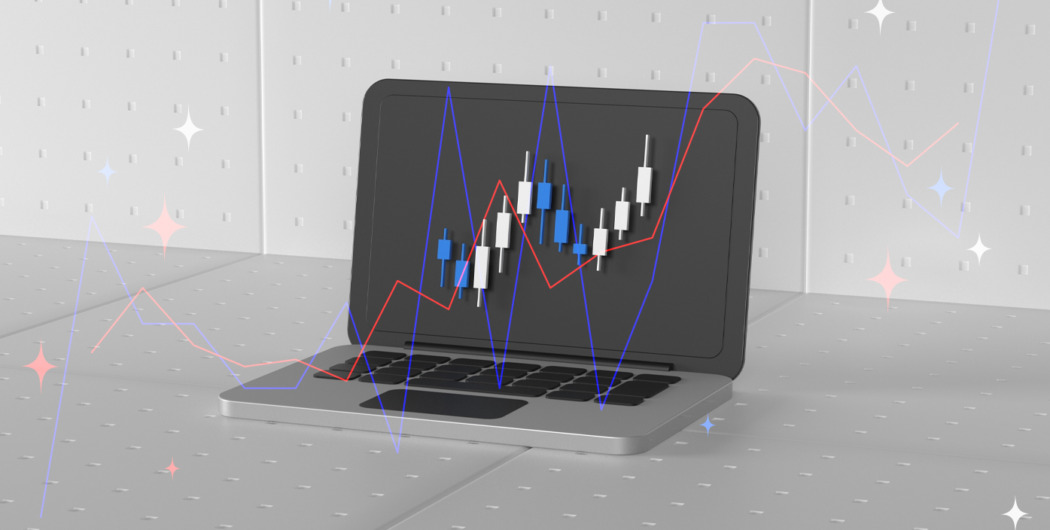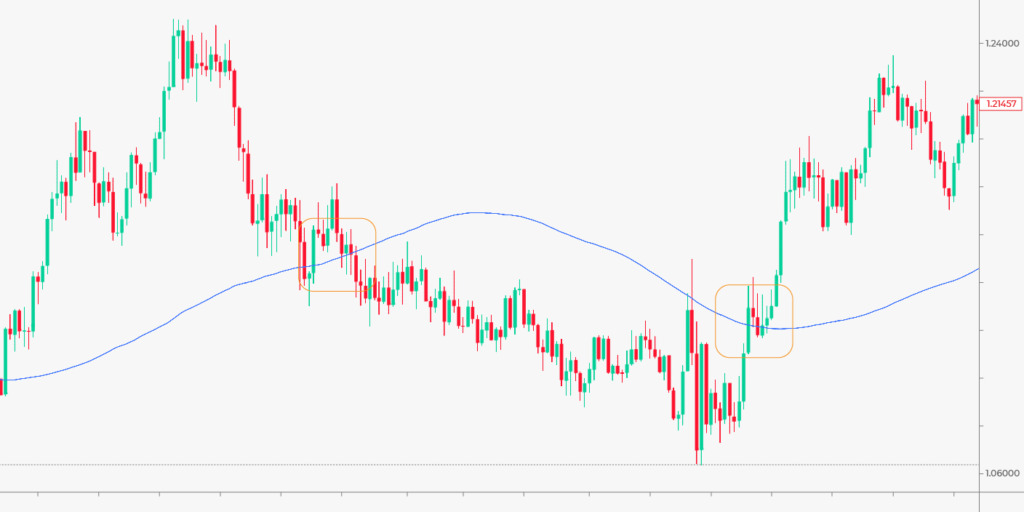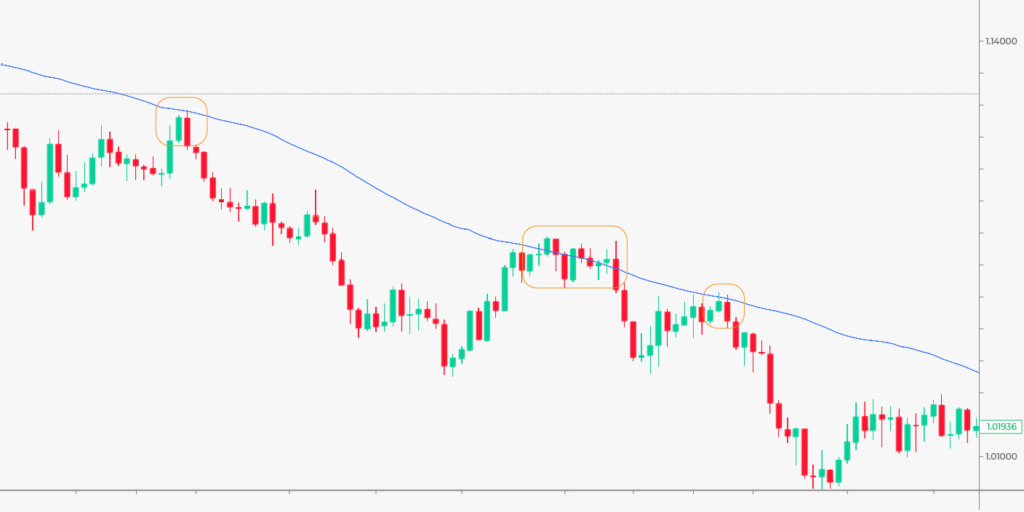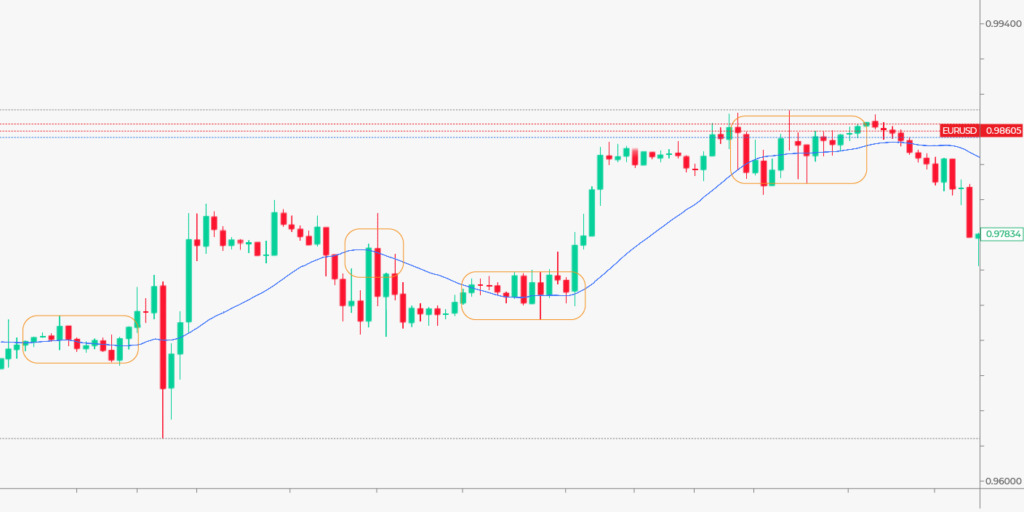

A moving average is one of the indicators newbies start with. It consists of one line but can provide a wide range of alerts on a price movement. Therefore, you should also use this tool in your trading system. However, before you start, you should learn all its unique features to make the system effective. Keep reading to find out what things are vital when trading with the moving average.
Understand a moving average
A moving average (MA) is a lagging technical indicator used to identify trends.
Interestingly, it’s applied not only in technical analysis but in economics to evaluate macroeconomic data, including gross domestic product and employment.
The indicator is calculated based on historical prices. Therefore, it provides delayed signals. However, it’s not a weakness but an advantage. When trading, you always need to confirm price movements—and the moving average helps you do that with its lagging alerts.
There are three key moving average types: simple, exponential, and weighted.
- The simple moving average is widely used on higher timeframes.
- The weighted moving average adds more weight to more recent prices. Therefore, it’s more responsive and effective in short-term periods.
- The exponential moving average also considers the latest prices more critical. However, in the exponential MA, the difference in the decrease between the two prices is exponential. So, it’s even more sensitive to price changes than weighted MA.
You can use any of them or try other types. However, simple and exponential moving averages are the most straightforward and, therefore, the most popular. The exponential MA works better on low timeframes, while the simple MA is better in longer periods.
Learn MA signals
No matter what indicator you use, you should know every signal it provides. The moving average has three key signs:
- Trend reversal
- Trend direction
- Support and resistance levels
Trend reversal
Even if you are a newbie, you’ve probably heard of golden and death crosses. The first predicts an uptrend, and the second warns about a downtrend. These signals are very reliable. The only rule you should follow is to combine MAs of the same type and use certain periods, which you will learn in the “Think of settings” section.
Trend direction
The moving average reflects a current trend. When it moves under the price, it’s an uptrend. When it’s above the price, it’s a downtrend.
Professional traders use this signal to predict a trend change in long-term timeframes. For this, you should use weekly or monthly timeframes and apply a 50-, 100-, or 200-period MA. The higher the timeframe is, the larger the period should be. After the MA changes its position relative to the price, a trend change will be confirmed.
On the weekly chart below, the 100-week MA changed its position relative to the price when the trend changed.

Support and resistance levels
You can use the MA as support and resistance levels. However, this signal will work better on short-term timeframes. On higher charts, the MA moves far from the price to serve as a boundary.
If you compare daily and hourly charts of the EUR/USD pair, you will notice the simple moving average more often interacts with the price on the hourly chart.


You can notice that MA periods differ. On the daily chart, the MA has a period of 50; on the hourly chart, the period is 21. You may know that the smaller the MA’s period is, the more often it interacts with the price. However, applying the period of 21 to the daily chart would be wrong because there are period rules you should follow.

Think of settings
Settings are vital for any indicator. In most cases, standard settings work the best. However, they won’t work for any trading system.
The most common periods for higher timeframes are 50, 100, and 200. For lower periods, it’s recommended to use periods of 9, 14, and 21. When you trade death and golden crosses, you should implement two MAs of the trio. For instance, combine a 50-period MA with a 100- or 200-period MA. If you use interactions of a 200-period MA and a 21-period MA, the signals won’t work.
Summing up
You shouldn’t base your trading system solely on the moving average. It’s an effective indicator, but it may provide false signals. You should combine every alert you get from the MA with signs of other indicators. Before entering the real market, test different MAs on the assets you will trade.








